Paradise for Trees is Also Paradise for Loggers
Anyone who visits the Pacific Northwest will see ample evidence of the logging industry in this part of the country. As you drive the roads you will see hills and mountains that have been give hair cuts. Sometimes a whole hill or mountain is devoid of trees. In other locations you see patches removed from the rest of the forest. You are sharing the road with trucks loaded with logs and the empty trucks folded up for their return to the forest. The Olympic Peninsula which has been our primary objective this summer is largely devoted to Olympic National Park but the fringes which remain are the domain of the timber industry.
Within Olympic National Park the forests are mostly untouched, trees are left to grow and die by natural processes. Under these conditions, Douglas Fir trees which are the dominant species here grow to 300 feet tall and have diameters over 12 feet and live for hundreds of years. The are quite simply breathtaking when you stand beneath them and look up to their upper branches. Their massive straight trunks, almost devoid of limbs in their lower reaches, seem to stretch to the sky. We need our National Parks to preserve sights like these for ourselves and for our children. Outside the National Park, trees like this are seldom seen.
Beyond the protection of the National Park, trees are a commodity. They are grown like a farmers crop, they are a farmers crop. Seedlings are planted within a specified short period after the forest is cut. With the abundant rainfall typical in the northwest, they will grow to five feet tall in a matter of three or four years. At this point, the tree farmer decides how to manage his crop and thins the stand of trees accordingly. Within 50 to 60 years these trees will grow to 60 to 80 feet tall and a diameter of about 14 inches. This early growth is the most rapid and most productive. Having all been planted at the same time, they all grow to look like one another. This makes them easy to harvest. The harvesting equipment is designed specifically to handle trees of this size.
We spent a morning touring the timber industry on a guided tour. The tour took us through a mill which processes logs into a variety of rough and finished dimension lumber. After that we went into the forest to see how the trees are harvested and processed for shipping to the mill. Our tour guide had a degree in forestry and had worked in the industry most of his career. He was a good ambassador for the timber industry.
Gone are the days of individual loggers scaling the trees and cutting the tops then felling the trees with hand saws or chain saws. Machinery has taken over here as it has in many other areas of farming. Trees are cut by machines. A different machine will turn the tree into a series of logs, stripped of their branches and some of the bark, cut into sections to fit on a truck in just a matter of seconds. A computer controls the actual cutting operation while the operator moves the arm to drop the logs where desired. As several of us stood watching this machine process tree after tree into logs ready for the mill, we remarked how this machine could do the work of 50 men working by hand. When the operator of the machine stepped out of the cab to take a break we were amazed to see that he had an artificial leg. Our guide explained to us that this young man had cancer as a youth and had his leg amputated. His leg is not the ultra-modern leg you see on the news and in athletic events these days. His leg was a stiff prosthesis which he moved around by swinging and dragging it into position. So here we had the work that at one time would have been done by 50 burly woodsmen, Paul Bunyons in a previous era, now done by a single man with an artificial leg.
Another machine will load the logs onto a truck which will transport the logs from the forest to a mill or in some cases to a port where they will be loaded onto ships. We saw huge stockpiles of logs at every major port in the northwest. At the mill, the mechanization continues. Arriving at the mill I observed a collection of rusty buildings that I was to learn held modern machinery. Logs are moved to conveyers by large machines. The conveyers carry the logs along an assembly line or perhaps it should be called a disassembly line. The last of the bark is stripped from the logs then they are lined up for the saw. They are placed on the saw table by a machine controlled by a computer. The computer using inputs from sensors and imaging devices decides exactly how to position the log on the saw table. With each cut, the log is first squared and then sectioned into dimension lumber. The operator at the computer sets the priority for the dimension lumber that is desired based on market conditions. If the price for 2x4's is better than 2x6's then the computer will try to cut as many 2x4's as it can from each log. The rest of the operators job is to watch the machine operate and deal with any breakdowns which may occur.
From here lumber goes to the kiln where moisture is cooked from the wood. The final step in the process is to shave the lumber to its final dimension. The classic 2x4 ends up being 1 1/2 inches by 3 1/2 inches when ready for market. This mill has the capability to produce everything from railroad ties to finished 2x4's.
The tour we took is offered in Forks, Washington by the Visitors Center in conjunction with the Timber Museum. Tours are free and are scheduled each Wednesday morning during the tourist season. The number of people who can participate on a tour is limited by the size of the van. If you tour the Olympic Peninsula you should put this tour on your agenda. It gives an interesting insight into an industry that is often maligned but is absolutely necessary for our modern society.



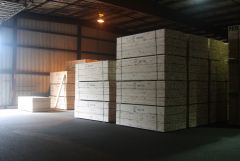

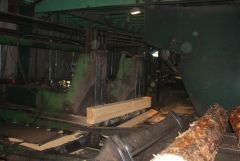
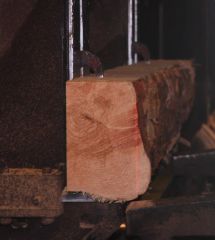
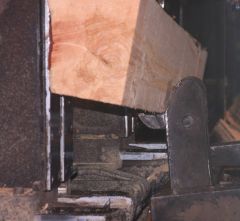

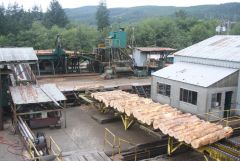
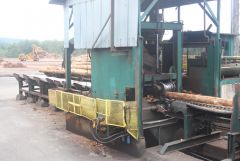

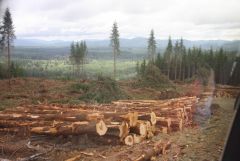
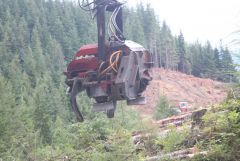
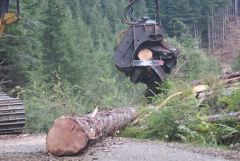

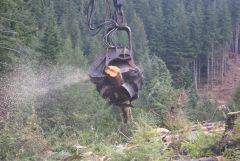
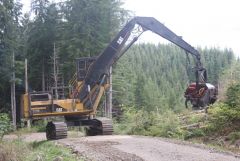

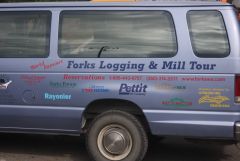
0 Comments
Recommended Comments
There are no comments to display.
Please sign in to comment
You will be able to leave a comment after signing in
Sign In Now